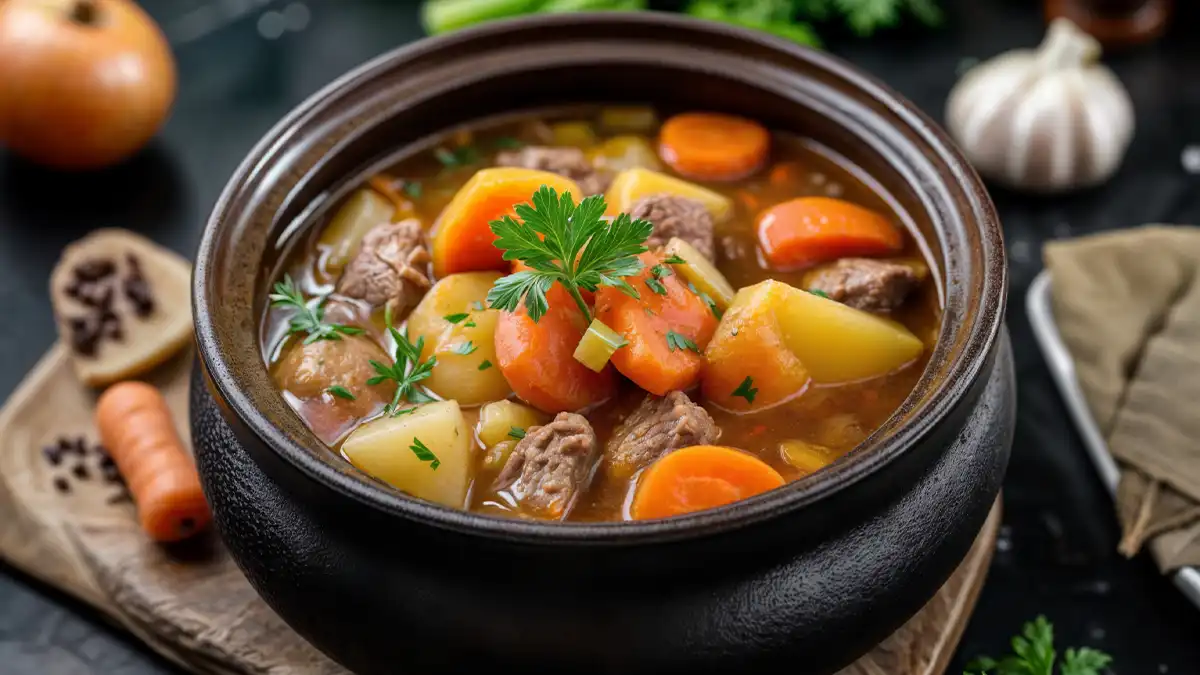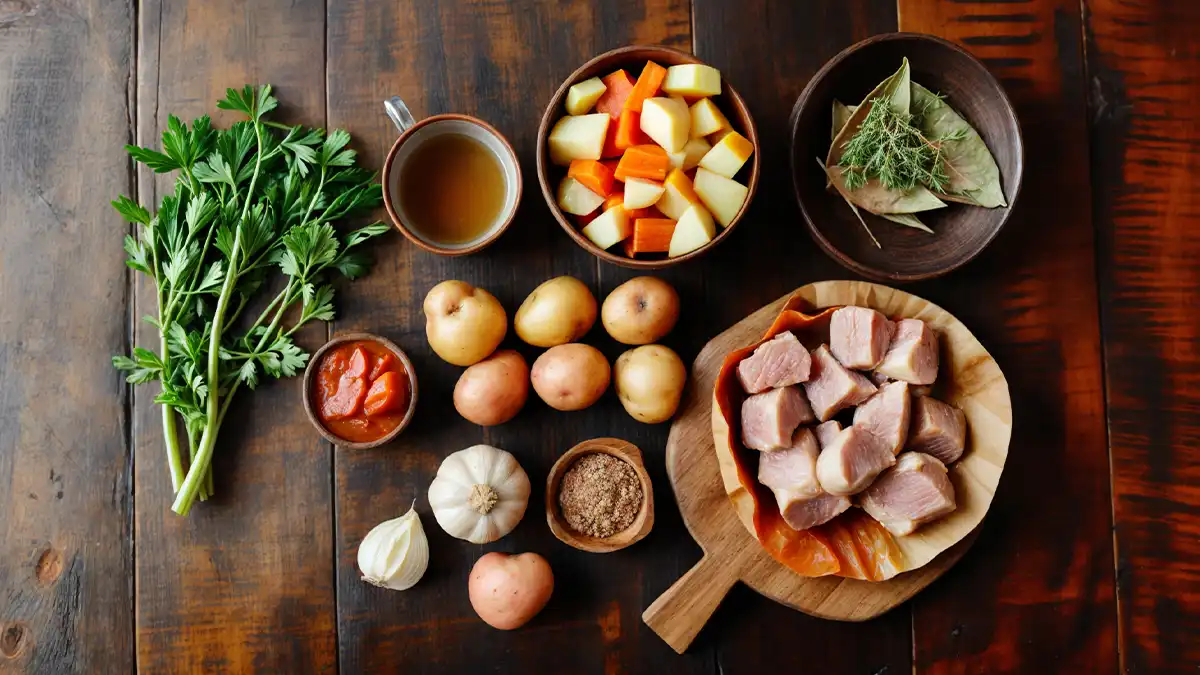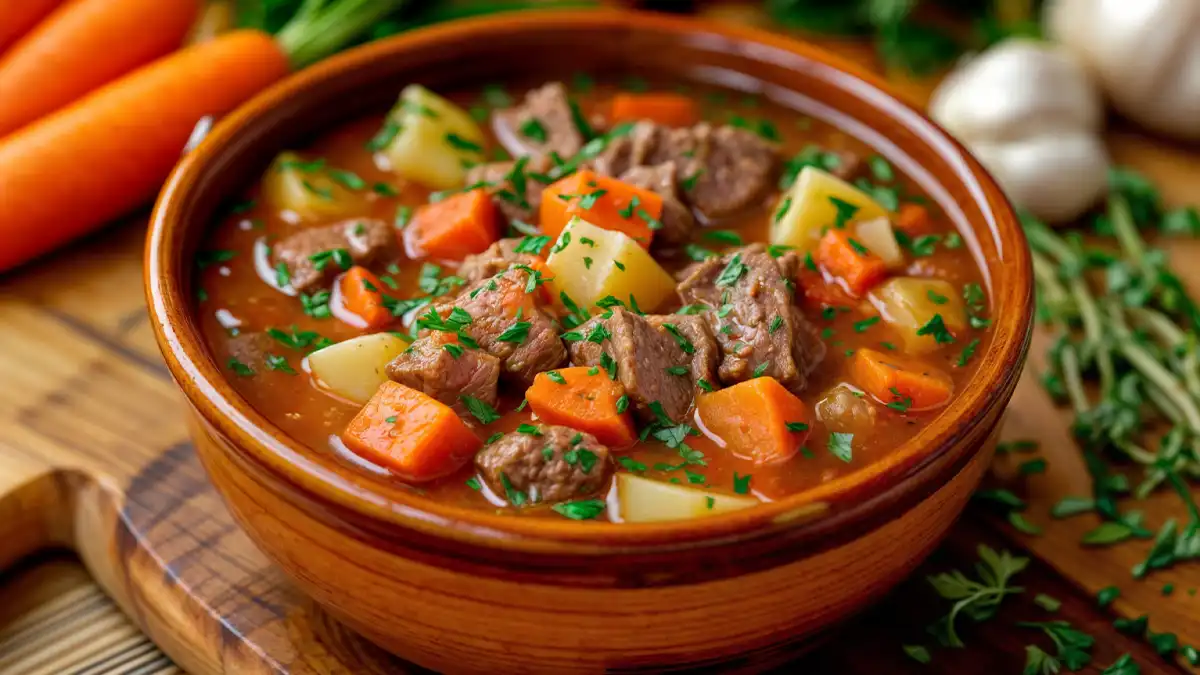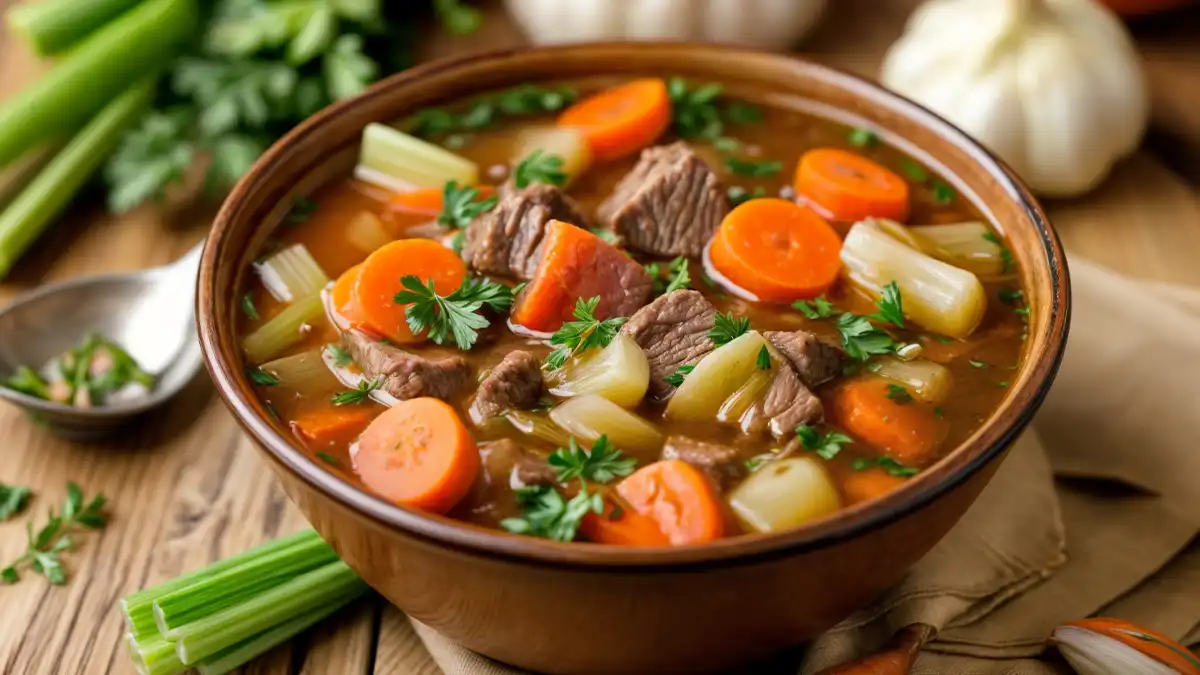Porcupine Soup might sound like a concoction from a whimsical fairytale, but it is very much a reality in various parts of the world, revered for its unique flavor and nutritional value. This dish, which involves the meat of a porcupine, offers a peek into an exotic culinary tradition that many may not be familiar with. Here, we embark on a savory journey to explore the intriguing world of Porcupine Soup.
Table of Contents
| Section | Content |
|---|---|
| Introduction | An engaging introduction to Porcupine Soup, discussing its origin and cultural significance. |
| Ingredients and Recipe | Detailed list of ingredients and step-by-step instructions on how to prepare Porcupine Soup. |
| Nutritional Information | Health benefits, nutritional content, and considerations of consuming Porcupine Soup. |
| Cultural Significance | Exploration of the historical background and cultural importance of Porcupine Soup. |
| Market Analysis | Analysis of the popularity and economic impact of Porcupine Soup on local markets. |
| FAQs | Answers to frequently asked questions about Porcupine Soup, covering common queries and misconceptions. |
| Conclusion | Final thoughts and reflections on the cultural, nutritional, and economic aspects of this dish. |
Porcupine Soup: A Trendsetter in Global Cuisine
Interestingly, Porcupine Soup isn’t just about the unusual choice of meat; it’s also a reflection of cultural significance and adaptation in culinary practices worldwide. As global palates become more adventurous, dishes like Porcupine Soup gain prominence, offering food enthusiasts a taste of the wild, literally and metaphorically. This dish beautifully encapsulates the essence of culinary diversity, bringing to the table flavors that are as rich in history as they are in taste.
In summary, Porcupine Soup serves as a perfect entry point for those looking to expand their culinary horizons. By integrating traditional cooking methods with modern-day gastronomy, this dish stands as a testament to the ever-evolving world of global cuisine. Stay tuned as we delve deeper into the ingredients that make up this exotic soup, followed by a detailed guide on how to bring this delightful recipe to your kitchen.
Ingredients and Recipe for Porcupine Soup
Porcupine Soup is more than just a meal; it’s a culinary journey that offers a unique taste experience. Below, you’ll find a detailed guide on how to prepare this distinct dish, along with a list of the necessary ingredients. Whether you’re a seasoned chef or a curious cook, this recipe will guide you through creating a truly unique soup.
Essential Ingredients for Crafting Porcupine Soup
The ingredients for Porcupine Soup may vary slightly based on regional preferences, but here is a core list to get you started:
- Porcupine meat: Approximately 2 pounds, cleaned and cubed
- Vegetable broth: 4 cups
- Carrots: 3 medium, sliced
- Potatoes: 2 large, cubed
- Onions: 1 large, chopped
- Garlic cloves: 3, minced
- Celery stalks: 2, sliced
- Bay leaves: 2
- Salt and pepper: To taste
- Fresh herbs: Such as parsley or thyme, for garnishing
Step-by-Step Cooking Instructions
- Prepare the meat: Begin by rinsing the porcupine meat thoroughly and patting it dry.
- Brown the meat: In a large pot, heat some oil over medium heat. Add the porcupine meat and cook until it’s browned on all sides.
- Sauté the vegetables: Remove the meat and set aside. In the same pot, add onions, garlic, celery, and carrots. Sauté until the onions are translucent.
- Simmer the soup: Return the meat to the pot along with potatoes, vegetable broth, bay leaves, salt, and pepper. Bring to a boil, then reduce heat and let it simmer for about 2 hours or until the meat is tender.
- Final touches: Remove the bay leaves, adjust seasoning if necessary, and garnish with fresh herbs before serving.
Regional Recipe Variations
While the above recipe provides a basic guideline, various regions might add their own twist to Porcupine Soup. Some might include local spices or additional vegetables to enhance the flavor.
Comparative Table of Ingredients
| Ingredient | Basic Recipe | Regional Variation 1 | Regional Variation 2 |
|---|---|---|---|
| Porcupine meat | 2 lbs | 2 lbs | 2 lbs |
| Vegetable broth | 4 cups | 3 cups | 5 cups |
| Carrots | 3 medium | 2 large | 4 medium |
| Potatoes | 2 large | 3 medium | 2 small |
| Onions | 1 large | 1 small | 2 large |
| Garlic cloves | 3 | 5 | 2 |
| Celery stalks | 2 | 1 | 3 |
| Bay leaves | 2 | 3 | 1 |
| Salt and pepper | To taste | To taste | To taste |
| Fresh herbs | As garnish | As garnish | As garnish |
For those who enjoy a similar rustic and hearty meal, explore our Porcupine Meatballs with Mushroom Soup recipe, which combines the robust flavors of porcupine meat with the creamy texture of mushroom soup.
In the next section, we will delve into the nutritional benefits of including this dish in your diet, ensuring you understand not only how to make it but also why it’s a beneficial addition to your culinary repertoire.
Nutritional Information of Porcupine Soup
Porcupine Soup isn’t just a unique culinary delight; it’s also packed with nutritional benefits that can enhance your diet. This section breaks down the health advantages of incorporating porcupine meat into your meals and provides a detailed look at its nutritional content.
Health Benefits of Porcupine Meat
Porcupine meat is lean and rich in protein, making it an excellent choice for those looking to maintain or increase muscle mass without consuming too much fat. Here are some of the key health benefits:
- High Protein Content: Essential for muscle repair and growth.
- Low Fat: Helps maintain lower cholesterol levels, reducing the risk of heart disease.
- Rich in Minerals: Particularly high in iron, which is crucial for forming red blood cells and preventing anemia.
Eating game meat like porcupine can be a healthy alternative to more common meats due to its natural diet and wild habitat, which contribute to its lean profile.
Nutritional Breakdown of Porcupine Soup
To help you understand the nutritional value of this dish, here is a basic breakdown per serving:
| Nutrient | Amount per Serving |
|---|---|
| Calories | 210 kcal |
| Protein | 30 g |
| Fat | 8 g |
| Carbohydrates | 10 g |
| Fiber | 2 g |
| Iron | 4 mg |
Potential Health Warnings or Considerations
While porcupine meat is nutritious, it’s important to source it responsibly to avoid potential health risks associated with wild game such as exposure to diseases. Always ensure the meat is thoroughly cooked to an internal temperature that kills any harmful bacteria or parasites.
For those interested in exploring more unique dishes with similar health benefits, check out our Jamaican Beef Patty Recipe, which also emphasizes lean proteins and rich flavors.
External Resources for a Balanced Diet
Understanding the role of exotic meats in a balanced diet is crucial. For more insights, visit the Animal Frontiers for information on the role of meat in a healthy diet.
This section should equip you with a good understanding of the nutritional benefits and considerations of this dish. In the next part, we’ll explore the cultural significance of this intriguing dish.
Cultural Significance of Porcupine Soup
Porcupine Soup holds a special place in the culinary traditions of various cultures. This section delves into the historical background of the dish, illustrating its role and evolution in traditional cuisines across the world.
Historical Background and Origins
The use of porcupine meat in cooking dates back centuries, particularly in regions where these animals are native. Porcupine Soup, as a dish, likely originated from the necessity of utilizing available local resources. In some cultures, porcupines were not only a source of sustenance but also held medicinal value, believed to strengthen and heal those who consumed it.
Porcupine Soup in Traditional Cuisine
Porcupine Soup is more than just a meal; it is a celebration of heritage and survival. It embodies the tradition of foraging and respect for nature that is evident in many indigenous culinary practices. The preparation and consumption of the soup are often accompanied by stories of the hunt and the communal effort in cooking, making it a dish that strengthens community bonds and cultural identity.
Role in Festivals and Ceremonial Occasions
In many cultures, exotic dishes like Porcupine Soup are reserved for special occasions such as festivals, weddings, and community gatherings. Its preparation is often seen as a rite of passage, with the knowledge and skills being passed down through generations.
Porcupine Soup: A Symbol of Culinary Diversity
Today, Porcupine Soup symbolizes the broadening of the culinary horizons, showcasing how regional dishes can gain a global audience. It represents a blend of tradition and innovation, appealing to both adventurous foodies and those who appreciate cultural history.
For those who enjoy exploring cultural dishes, our Bishop Cake recipe offers another glimpse into unique culinary traditions that have been cherished and preserved over the years.
Exploring Further: Global Culinary Practices
To learn more about how traditional dishes like Porcupine Soup contribute to global culinary diversity, visiting websites like Epicurious can provide a wealth of information on a variety of world cuisines and cooking techniques.
In the next section, we will analyze the current market trends surrounding this dish, examining its popularity and economic impact on local markets. This exploration will not only reflect on its past significance but also project its future in the culinary world.
Market Analysis of Porcupine Soup
The market dynamics surrounding Porcupine Soup provide valuable insights into its acceptance and popularity across different demographics. This section delves into consumer trends and the economic impact of this distinctive dish.
Popularity Trends and Consumer Demographics
Porcupine Soup, while niche, has carved out its own unique space in the culinary world. The dish’s allure lies in its exotic nature, appealing to adventurous eaters and those interested in sustainable eating practices. The demographic attracted to Porcupine Soup typically includes:
- Culinary Adventurers: Those seeking unique dining experiences.
- Sustainable Consumers: Individuals who prioritize ethically sourced and environmentally friendly foods.
- Cultural Enthusiasts: People interested in traditional and regional cuisines.
Analysis of Consumer Preferences
The interest in game meat, including porcupine, has been rising due to growing awareness of its health benefits and lower environmental impact compared to traditional livestock. Here’s a breakdown of the factors influencing consumer preferences:
| Factor | Influence on Consumer Choice |
|---|---|
| Health Benefits | High |
| Environmental Sustainability | Medium |
| Novelty of the Dish | High |
| Availability | Low |
Economic Impact on Local Markets
Porcupine Soup has not only enriched dining tables but also local economies. In areas where porcupines are naturally abundant, hunting and selling this game meat can provide a crucial source of income. This economic contribution extends to:
- Local Farmers and Hunters: Providing them with an alternative income source through sustainable hunting.
- Restaurants and Chefs: Offering a unique dish that can attract tourists and locals alike.
- Culinary Tourism: Enhancing the appeal of a region as a destination for food lovers seeking authentic and unusual experiences.
The Future Outlook for Porcupine Soup
As global interest in sustainable and ethical eating continues to grow, dishes like Porcupine Soup could see a rise in popularity. The challenge remains in maintaining sustainable practices while meeting the curiosity and demand from a broader audience. The future of Porcupine Soup in the global culinary scene looks promising, with potential for greater recognition and appreciation of its cultural and nutritional value.
In the next section, we will address frequently asked questions about this intriguing dish, helping to clarify common queries and misconceptions surrounding it.
FAQ About Porcupine Soup
Porcupine Soup often piques the curiosity of many due to its unusual main ingredient. Here are some frequently asked questions that help shed light on this intriguing dish.
What is Porcupine Soup Made Of?
Porcupine Soup is primarily made from the meat of a porcupine, which is stewed with various vegetables and spices to enhance its flavor. Common additions include carrots, potatoes, onions, and aromatic herbs like parsley and thyme. The soup is rich, hearty, and offers a unique taste experience akin to other game meats.
Where Can I Find Porcupine Soup?
Porcupine Soup is typically found in regions where porcupines are native and hunting them is legal. It’s more common in specialty or regional restaurants that focus on local or indigenous cuisines. For those looking to try making it at home, sourcing the meat from reputable game meat suppliers is essential.
How Do I Prepare Porcupine Soup Safely?
To safely prepare Porcupine Soup, ensure that the porcupine meat is sourced responsibly and is thoroughly cooked. Porcupine meat should be cooked to an internal temperature of at least 165°F (74°C) to ensure all potential pathogens are killed. It’s also crucial to handle the meat with care and follow proper kitchen hygiene to avoid cross-contamination.
What are the Best Occasions to Serve Porcupine Soup?
Porcupine Soup is often served during special occasions such as family gatherings, cultural events, or festivals. It’s seen as a special dish due to its rarity and the intricate preparation involved. Serving this soup can offer a unique culinary experience to guests, making it ideal for times when you want to impress or celebrate heritage and tradition.
These FAQs aim to clarify common inquiries and enhance understanding of this unique dish, making it more accessible to those intrigued by its cultural and culinary significance. In the next and final section, we will wrap up our exploration with a comprehensive conclusion that reflects on its cultural, nutritional, and economic aspects.
Conclusion: Reflecting on the Journey of Porcupine Soup
As we conclude our exploration of Porcupine Soup, it’s clear that this dish is much more than just an exotic culinary delight. It embodies a rich tapestry of history, culture, and nutrition that spans across various regions and traditions.
Summarizing the Cultural and Nutritional Impact
Porcupine Soup serves as a brilliant example of how traditional foods can offer us a window into the past while providing substantial health benefits. The soup’s rich protein content and low-fat profile make it an excellent choice for those looking to diversify their diet with healthy, unconventional options. Furthermore, its role in cultural festivals and communal gatherings highlights the soup’s significance as a linchpin in culinary heritage.
Future Prospects in Global Cuisine
Looking forward, Porcupine Soup has the potential to become more recognized globally as culinary boundaries continue to expand. Its unique blend of flavors and story can appeal to a worldwide audience eager to explore diverse, sustainable eating practices. The increasing interest in ethical and environmentally conscious food choices may also elevate the status of game meats like porcupine, positioning dishes such as this as both a novelty and a norm in adventurous dining experiences.
Personal Recommendation
For anyone curious about incorporating new tastes into their cooking repertoire, trying this unique dish can be a rewarding endeavor. It not only broadens your culinary horizon but also connects you with a piece of global heritage that is as nourishing as it is intriguing.
We’ve explored the origins, preparation, and significance of this dish. Our aim is to inspire you to appreciate and maybe even prepare it, celebrating the diversity of global cuisines.




